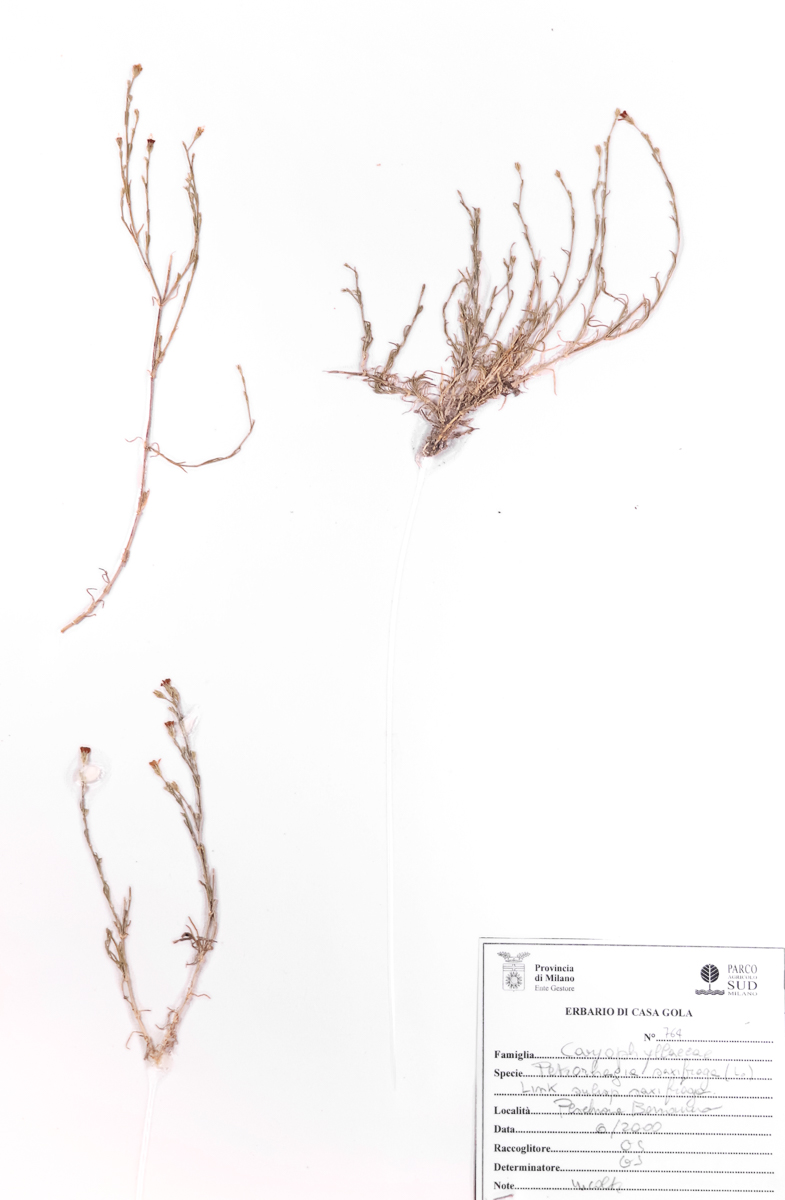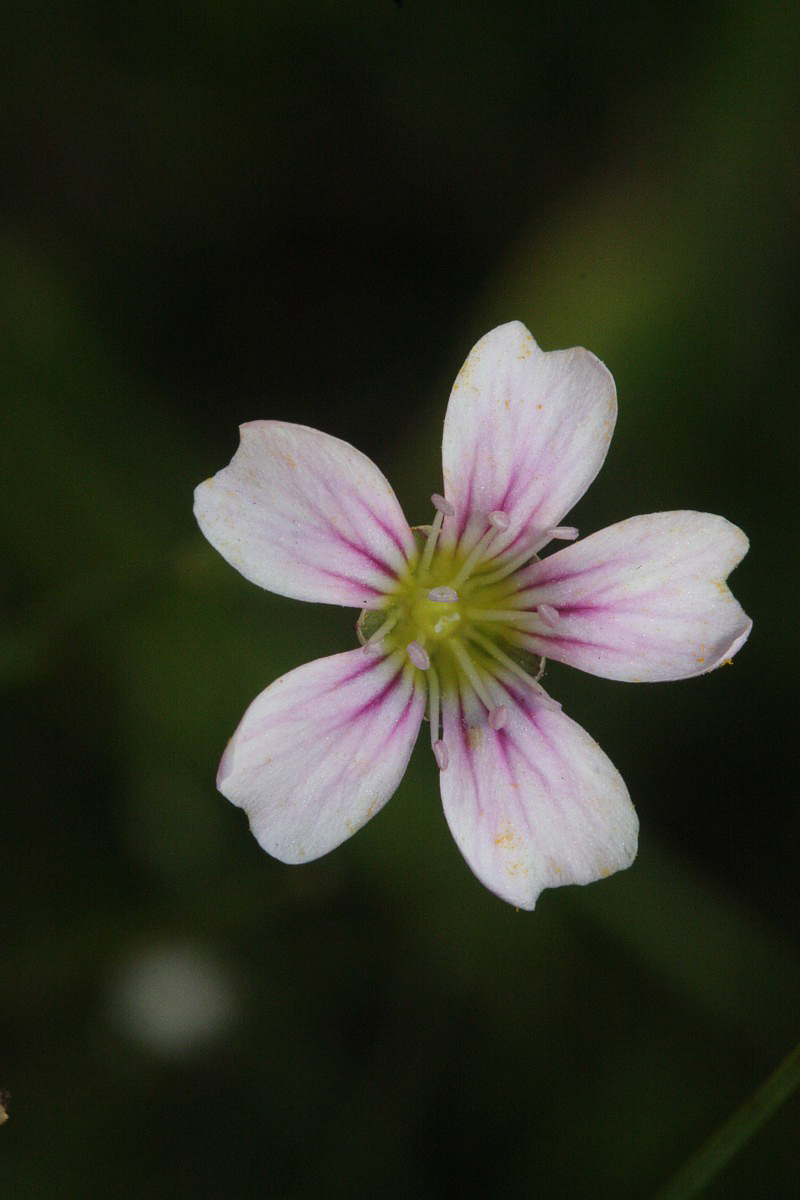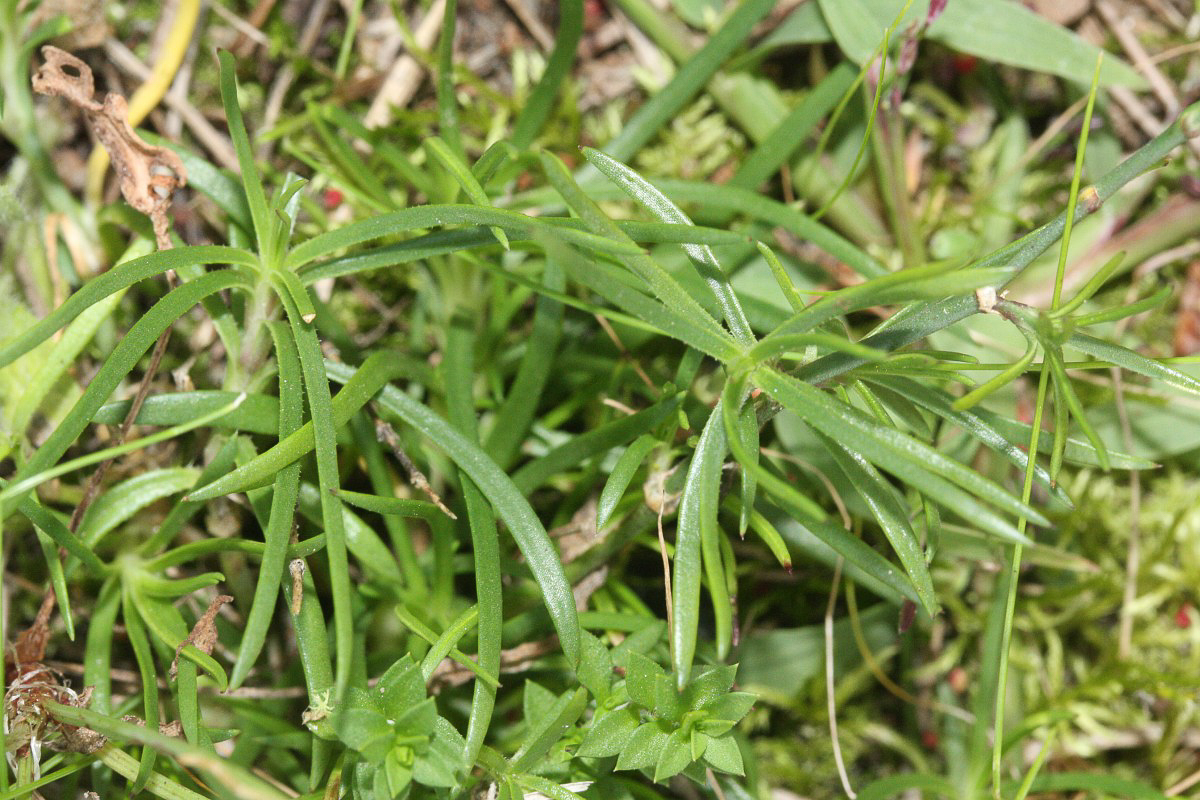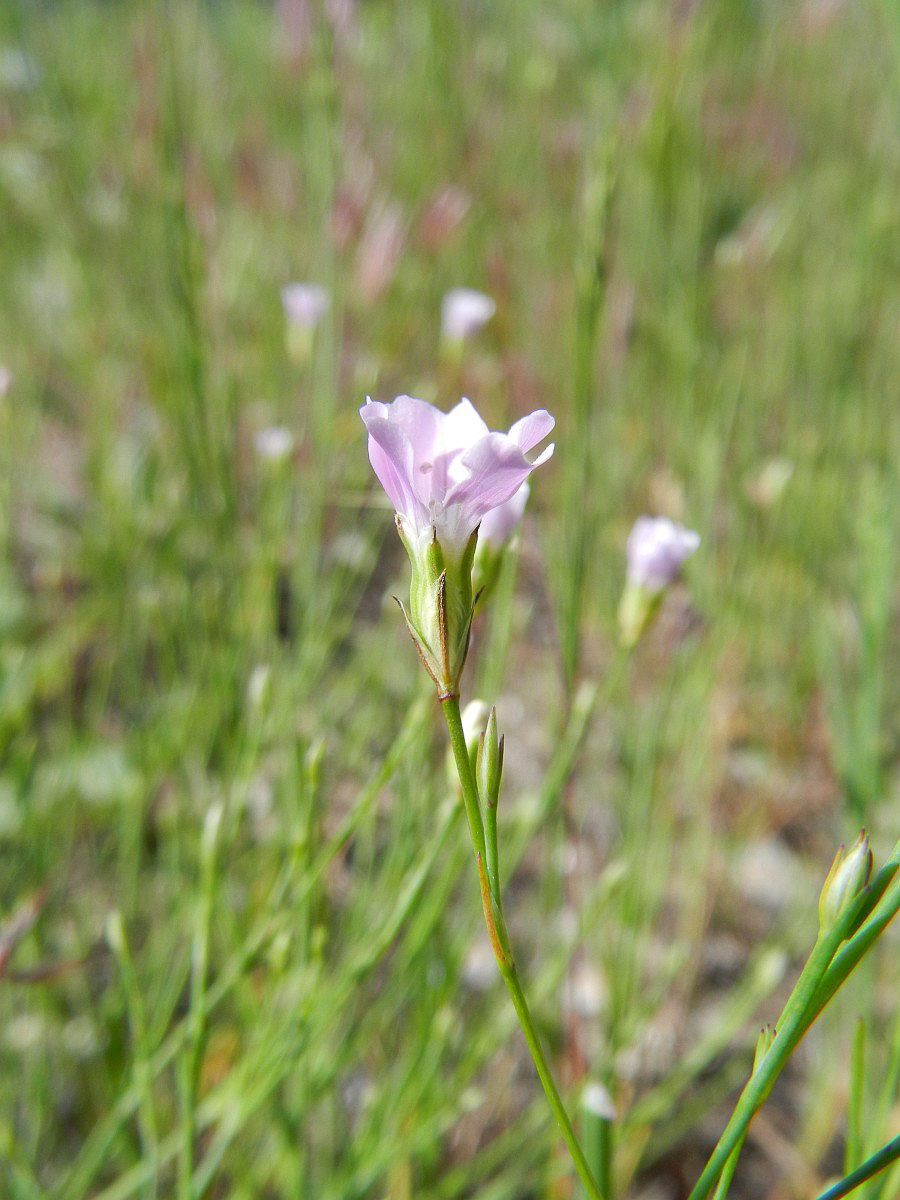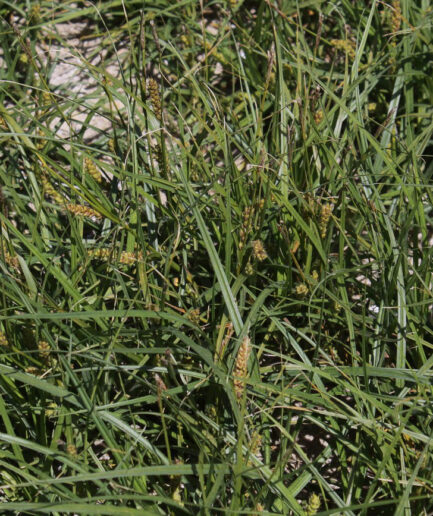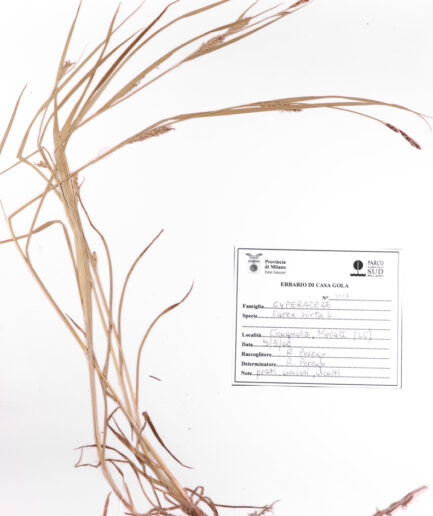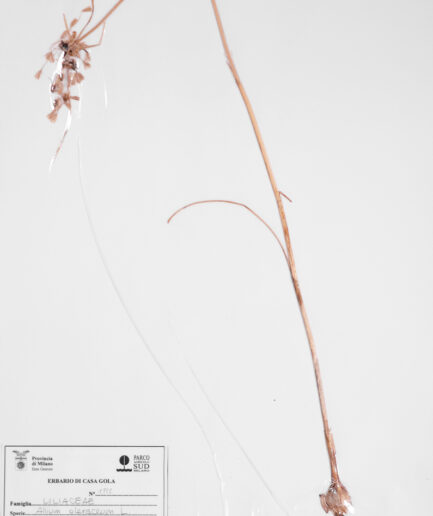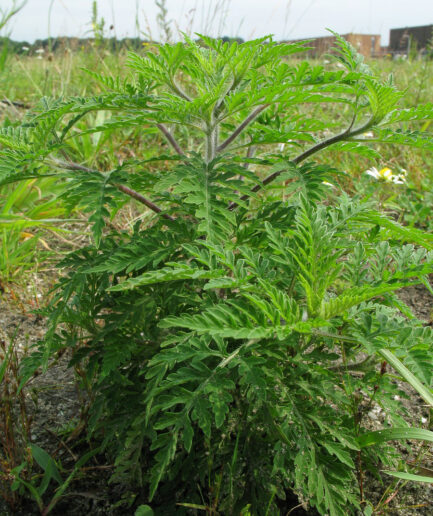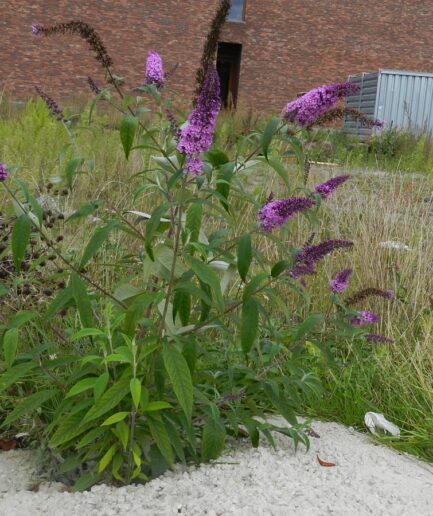Tunic flower
Scientific Name: Petrorhagia saxifraga (L.) Link
Family: Caryophyllaceae
MORPHOLOGY
Habit and dimensions: perennial herbaceous plant reaching 10-40 cm in height.
Stem: branched and dichotomously divided in the upper part, glabrous, prostrate-ascending, more or less slender and rigid.
Leaves: stem leaves sparse, opposite, sessile, linear-acute, single-veined, 6-10 mm long, with small dense tufts at the base, sessile with ciliate margins.
Flowers: solitary terminal hermaphrodite flowers, borne on a long peduncle. Corolla actinomorphic, composed of 5 free, separate petals (dialypetalous), obtuse or truncate at the apex, 4.5-10 mm long, white-pink with 3 purplish veins, obovate blade with claw. The campanulate calyx, with long, rounded, ciliate teeth on the margin, is surrounded at the base by 4 scarious, mucronate bracts or bracteoles, forming a calyculus, which is shorter (1/3-3/4) than the calyx. Blooms from May to September.
Fruits and seeds: the fruit is a denticidal oblong capsule, 5-6 mm long. Seeds shield-shaped, compressed, dark brownish-black.
DISTRIBUTION AND HABITAT
Present throughout Italy in fallow lands, preferring dry places, arid soils, sandy areas, and dry stone walls, from the plains to the mountains up to 1,500 m in altitude.
Photo: licensed freely by Saxifraga and Willem van Kruijsbergen, Rutger Barendse



